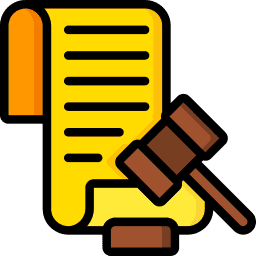Social media has the potential to be a powerful force for change in the world. While your friends’ posts might seem frivolous and fun, the fact is that social media has been used to significantly change and alter the world in which we live. With that in mind, it’s important for social media platforms to act responsibly and understand the potential they have for both great harm and great good; disinformation, cyberbullying, and dealing with bot accounts are just some of the ways that social media giants can make positive changes.
Since TikTok is one of the biggest social media platforms in the world right now, it stands to reason that the app has just as much of a mandate to act responsibly as any other platform does. That’s the rationale behind the new state-affiliated media policy, which was introduced in January. The policy is intended to ensure that users know where their news is coming from and who it’s being reported by, so let’s take a look at what this policy is and what it means for TikTok.
What is the TikTok state-affiliated media policy?

The policy is set out in a fairly lengthy TikTok blog post. In short, it’s a policy intended to display a label when a post has been created by state-controlled media. In 2022, this policy was mainly restricted to Russia, Ukraine, and Belarus, as a direct result of the Russian invasion of Ukraine. In January this year, though, TikTok extended the policy to organisations everywhere around the world, so you should start seeing labels if you’re watching content with a state-owned organisation behind it.
TikTok says its mission is to “label accounts run by entities whose editorial output or decision-making process is subject to control or influence by a government”. To put this policy into practice, the platform says it met with “more than 60” experts across the fields of media, political science, academia, and more. In addition, TikTok says it “worked closely with a leading global media monitor” and consulted its Content and Safety Advisory Councils when putting the state-affiliated media policy together.
Why was this policy introduced?

With misinformation and disinformation rampant in the world right now (and there’s a difference between the two), TikTok has introduced this policy in order to “help viewers better understand sources behind content”. State-controlled media naturally has a vested interest in reporting certain stories and not reporting others, so when users start to disseminate information on TikTok, it’s important that they know where that information is coming from and consider the source before beginning to share it.
The aim, according to TikTok, is to ensure that users have “accurate, transparent, and actionable context” when engaging with content that’s created by accounts with potential state affiliation. The reason for this should be fairly obvious; if users share content created by state media, they may be unknowingly parroting the narrow viewpoint of certain governments that have objectionable views. It’s important to keep TikTok users informed.
How does TikTok decide what a state-controlled media entity is?

This is an important question. Some media outlets will parrot the views of their governments without being state-owned, while other outlets are not officially mouthpieces of their state but are still considered state-owned nonetheless. Helpfully, though, TikTok has provided a rundown of its criteria for deciding whether or not a media entity is state-owned. Here are the bullet points TikTok lists for this purpose.
- Editorial independence. TikTok considers whether or not “editorial independence” is part of the organisation’s mission statement.
- Journalistic conduct guidelines. Any non-state-affiliated media organisation will have guidelines regarding how it expects its journalists to go about their business. You can also consider these ethical guidelines for the journalists.
- Management or editorial state affiliations. If management staff or editorial personnel have state affiliations, then it’s reasonable to believe that the outlet itself is also state-affiliated.
- Transparent state affiliation disclosure. Naturally, if an outlet has openly admitted that it is affiliated with a particular state, then that outlet should be considered state-affiliated.
- Evidence of editorial guideline breaches. If there’s ample evidence that an outlet has breached its editorial guidelines, perhaps even on numerous occasions, then state affiliation may be a possibility.
- Approach to government-related stories. Many stories that emerge are of great public interest when they’re related to the government of a country. Looking at how the media organisation in question handles those stories can help to determine whether or not it’s state-affiliated.
When will the state media label come into effect?

According to TikTok, this initiative is expanding beyond its pilot and will start appearing in “over 40 markets across multiple regions” from the rollout, which occurred in January. After that, the label will be rolled out to a wider range of markets around the world “over time”. TikTok doesn’t provide a specific time frame for this, but you can expect to start seeing the state-affiliated media label appear on content over the next few months, in all likelihood.
In addition to the above, TikTok says it’s also working hard to provide an appeals process so that organisations and media outlets can dispute the state affiliation label. This process will involve the organisation submitting “additional information to indicate safeguards that ensure editorial independence”. TikTok will then evaluate the extra information and decide whether or not the state affiliation label should remain based on what it finds.







